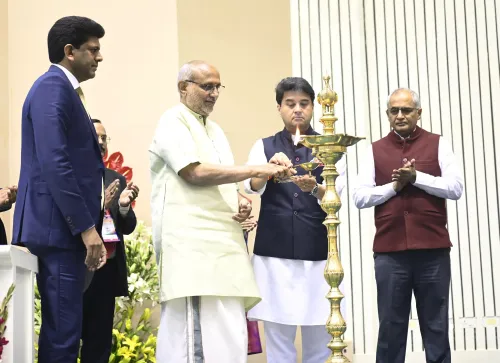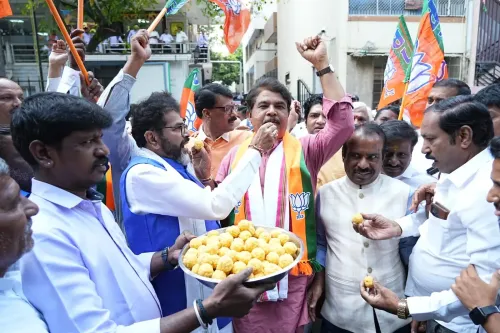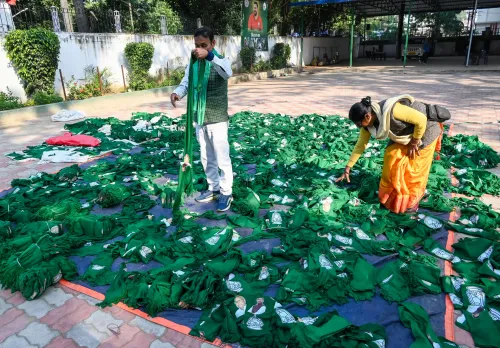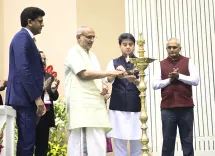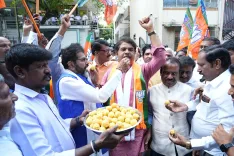Is Rahul Gandhi BJP's Most Effective Campaigner Following Bihar Results?
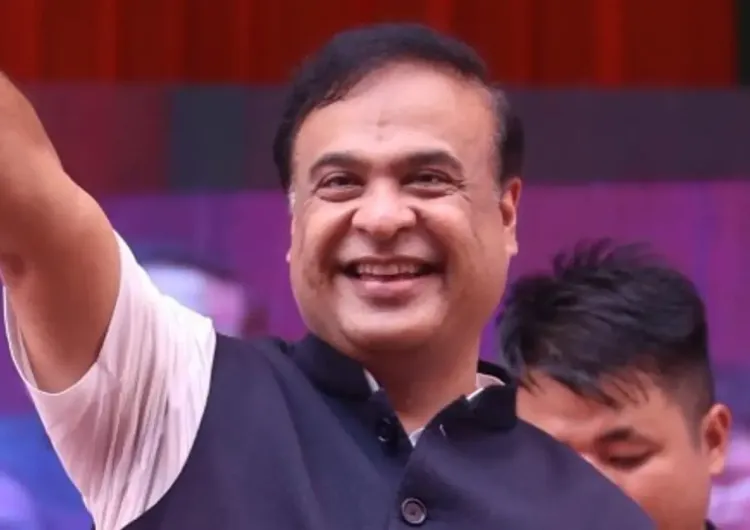
Synopsis
Key Takeaways
- Rahul Gandhi's campaign presence may correlate with BJP victories.
- The NDA solidified its control in Bihar with a landslide win.
- Voter engagement was notably high at 67.14%.
- The Mahagathbandhan faced a severe electoral defeat.
- Internal weaknesses and strategic errors contributed to the opposition's collapse.
Guwahati, Nov 14 (NationPress) - Assam's Chief Minister Himanta Biswa Sarma took a jab at Rahul Gandhi on Friday, labeling him the BJP's biggest "star campaigner" after the Congress party's disappointing performance in the recent Bihar elections, contrasted with the NDA's remarkable success.
During a press interaction, CM Sarma stated, "I have consistently pointed out during the Bihar election campaign that wherever Rahul Gandhi steps in to campaign, the BJP emerges victorious in those constituencies. This is a reality, and if Rahul Gandhi chooses to campaign in Assam, we would be eager to welcome him as he would further guarantee the BJP's success in the forthcoming Assembly elections."
Additionally, the Chief Minister critiqued the recent gathering of opposition parties aimed at forming a united front to challenge the BJP in the next elections.
He remarked, "The opposition's meeting was primarily convened to discuss the wedding of one of their leaders. We need not concern ourselves with the opposition parties, and notably, if Akhil Gogoi is involved, a catastrophe is likely to ensue," he added.
In a decisive electoral outcome that solidifies the National Democratic Alliance's firm control over Bihar, the ruling coalition achieved a landslide win, surpassing the majority threshold of 122 seats.
Under the leadership of Chief Minister Nitish Kumar's Janata Dal (United), the NDA's seat count was significantly enhanced by the Bharatiya Janata Party.
Voter participation surged to 67.14%, an increase of nearly 10 percentage points compared to 2020, indicating strong engagement amidst intense campaigning.
In stark contrast, the opposition coalition Mahagathbandhan, which included the Rashtriya Janata Dal (RJD), Congress, and Left parties, faced a crushing defeat.
The RJD, the coalition's cornerstone, managed to secure fewer than 40 seats, while both the Congress and the Communist Party of India (Marxist-Leninist) Liberation faced severe losses.
The NDA's vote share of 47.2% overshadowed the Mahagathbandhan's stagnant 37.3%, a slight rise from 37.23% in 2020, underscoring how vote efficiency and consolidation led the incumbents to victory while fragmenting the opposition's support.
This report explores the intricate dynamics behind the Mahagathbandhan's electoral collapse, utilizing data from the Election Commission of India, alliance mathematics, and expert analyses.
The Grand Alliance's downfall can be attributed to a detrimental blend of internal weaknesses, strategic miscalculations, and the NDA's adept counter-mobilization, transforming the murmurs of anti-incumbency into a non-issue.


